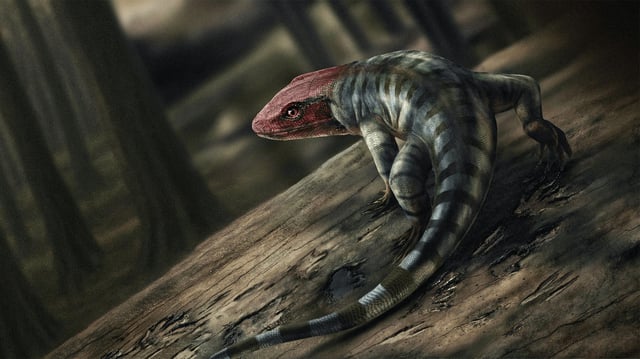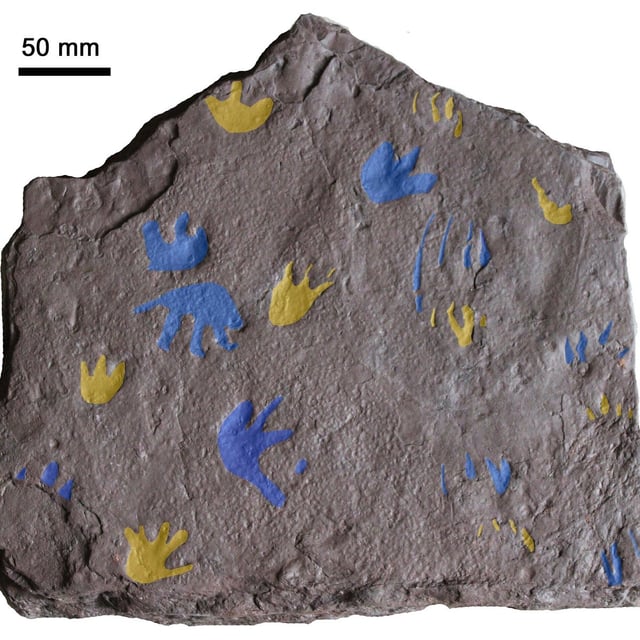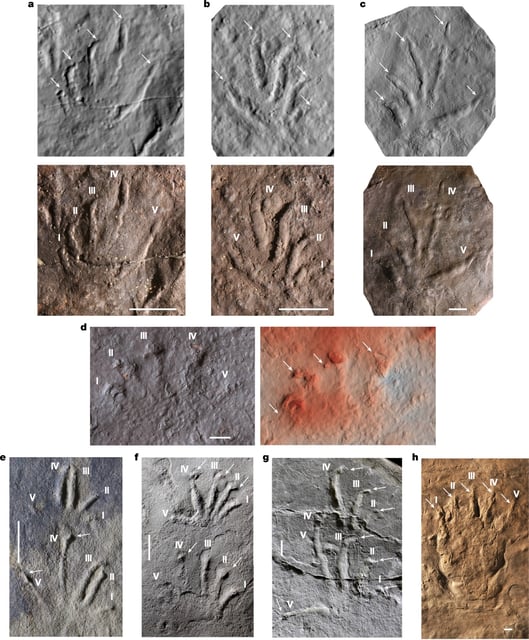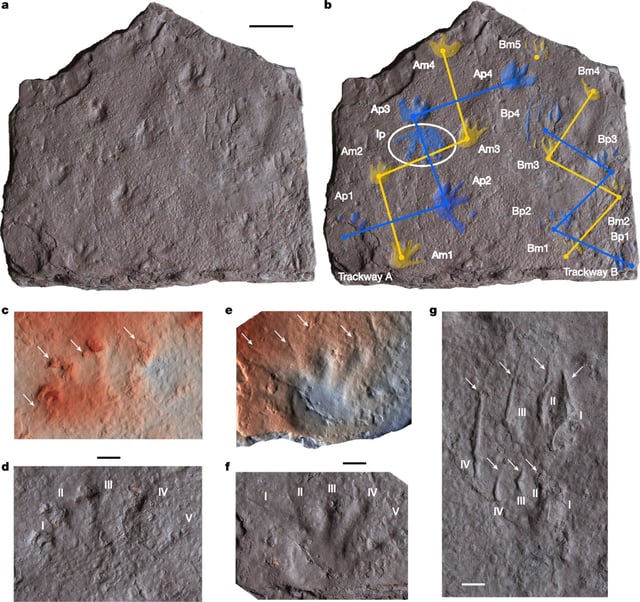Overview
- Fossilized clawed footprints discovered in Victoria, Australia, date to approximately 355 million years ago, making them the oldest evidence of amniotes—early reptile relatives.
- The findings push back the origin of amniotes by 35–40 million years, suggesting they diverged from amphibians during the Devonian period, around 380 million years ago.
- The tracks, preserved in sandstone, display distinct claw impressions and five-toed footprints, features characteristic of reptiles but not amphibians.
- Amateur fossil hunters Craig A. Eury and John Eason made the discovery, highlighting the significant contributions of nonprofessionals to paleontology.
- While broadly accepted, some researchers question whether the tracks reflect terrestrial walking or shallow-water movement, calling for additional body fossil evidence to confirm the interpretation.



